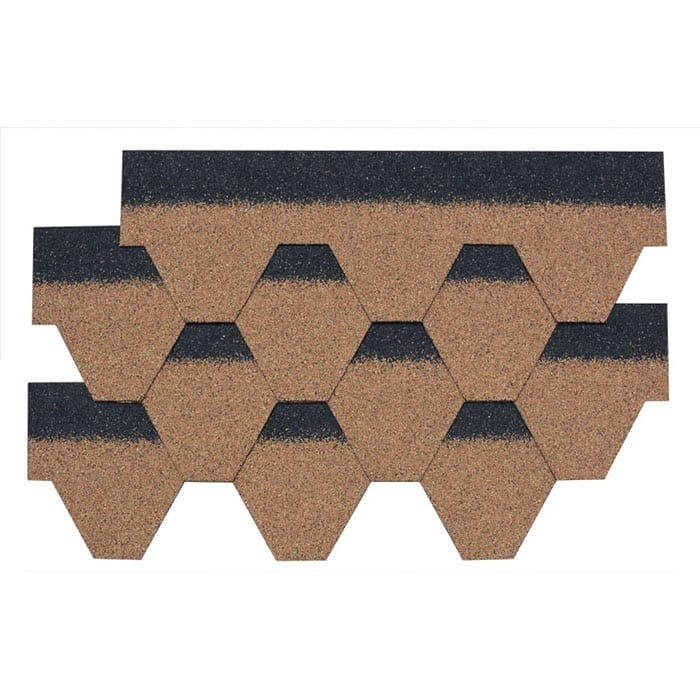In the world of sustainable building practices, roofing material selection plays a key role in improving energy efficiency, durability and aesthetics. An innovative option that has become popular in recent years is hexagonal roofing, especially those built with hexagonal asphalt roof tiles. This blog takes an in-depth look at the benefits of hexagonal roofs and how they contribute to sustainable building practices.
Beautiful and versatile
Hexagonal roof are not only eye-catching in appearance but also available in a variety of designs. Its unique shape allows for creative architectural expression, making it suitable for a variety of architectural styles, from contemporary to traditional. The geometric pattern of hexagonal tiles can create a stunning visual impact and enhance the overall beauty of the building. This appeal can increase property value and attract potential buyers or renters, making it a smart investment for builders and homeowners.
Improve energy efficiency
One of the most significant advantages of a hexagonal roof is its potential to increase energy efficiency. This design allows for better airflow and ventilation, helping to regulate indoor temperatures. This natural ventilation reduces reliance on artificial heating and cooling systems, resulting in lower energy consumption and lower utility bills. Additionally, hexagonal asphalt roof tiles can be designed with reflective surfaces to minimize heat gain, further improving energy efficiency.
Durability and longevity
When it comes to roofing materials, durability is crucial. Hexagonal asphalt shingle roof tile are known for their adaptability to harsh weather conditions, including heavy rain, snow, and strong winds. The manufacturer can produce 30,000,000 square meters of tiles per year, ensuring that these tiles are long-lasting. Their long service life means fewer replacements and repairs, which not only saves money but also reduces waste and is in line with sustainable building practices.
Environmentally friendly materials
Sustainability is at the heart of modern architecture, and hexagonal asphalt roof tiles are often made from environmentally friendly materials. Many manufacturers contribute to the circular economy by prioritizing the use of recycled materials in their production processes. By choosing a hexagonal roof, builders can significantly reduce their carbon footprint and promote environmentally responsible practices.
Cost Effectiveness
While the initial investment with a hexagonal roof may be higher than traditional roofing options, the long-term cost savings are undeniable. With a monthly supply capacity of 300,000 square meters and an annual stone-coated metal roof tile production capacity of 50,000,000 square meters, the manufacturer can meet the growing demand for sustainable roofing solutions. The durability and energy efficiency of hexagonal roofs reduces maintenance costs and reduces energy bills, making it an affordable option for homeowners and builders.
in conclusion
In summary, hexagonal roofs, especially those made from hexagonal asphalt shingles, offer several advantages in sustainable building practices. Their aesthetics, energy efficiency, durability, environmentally friendly materials and cost-effectiveness make them an attractive choice for modern construction. As the demand for sustainable building solutions continues to increase, hexagonal roofs stand out as a forward-thinking option that not only enhances the aesthetics of the building but also contributes to a more sustainable future. Whether you are a builder, architect, or homeowner, considering a hexagonal roof can be a step toward greener, more efficient building practices.
Post time: Nov-18-2024








